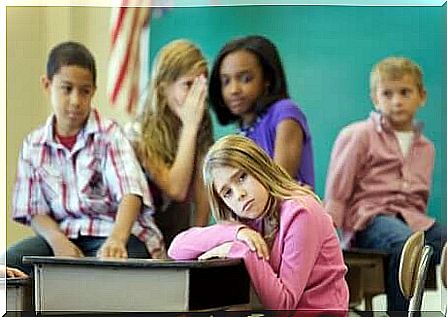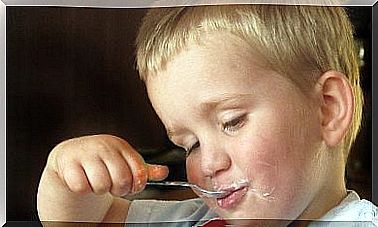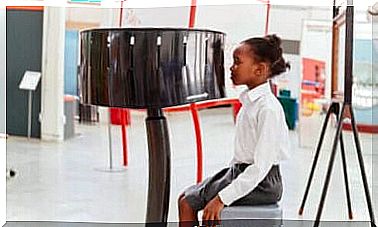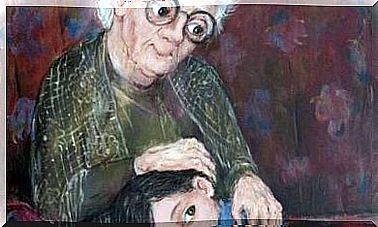Outsourcing: The Problem Of Excluded Children

Social relationships are never easy, especially not during childhood and adolescence. Many children suffer from freezing or not being accepted by their peers. This can be devastating to their emotional well-being and future self-esteem.
One of the biggest challenges for children is to build relationships with their peers. This socialization is very important for children’s social and psychological development. It gives them stability, intimacy, protection and emotional support.
But this learning process is sometimes hindered by freezing. Unfortunately, this is a growing problem.
What is freezing?
Basically, expulsion is a type of exclusion that an individual is exposed to by their peers. In general, the victim experiences low self-esteem and feels lonely. This may be reflected in some changes in the child’s behavior.
It is the opposite of social acceptance, where an individual experiences love and recognition and is popular with his or her peers.
Reasons why a child is frozen
Freezing is a complex situation that requires measures that promote acceptance and inclusion.
The following usually predict the expulsion of a child from the group:
- The frozen child’s behavior. In general, the child does not have good control over his physical or verbal impulses. For example, the child can sometimes be disruptive to the rest of the group.
- Constant motivation of the child’s attitudes. He or she can sometimes blame someone else for their actions. This only increases the risk of freezing.
- Frustration in the frozen individual. This can occur in combination with depression, hostility, isolation and other consequences.
- Shy children who belong to different social or ethnic groups or who have a disability.
Freezing, however, involves variables that are not just limited to the attitude of the frozen child. It is a situation where all parties in the child’s environment are involved – teachers, family members and classmates.
When children are excluded, they lose the opportunity to establish positive relationships and develop their social abilities that stimulate their social and psychological growth.
How can you tell if a child is a victim of freezing?
An estimated 15% of children suffer from the freezing of their peers at some point. It can sometimes lead to or be part of bullying. Discovering that a child is going through this helps prevent the situation from escalating.
The most common attitudes of frozen children are the following:
- Aggressive or troublesome behavior that makes it difficult to interact with the rest of the group.
- Anxious and impulsive behavior that makes the child angry quickly or easily.
- Outbreaks, lack of focus and fuss.
- Isolation, withdrawal and shyness.
- Very young children are prone to tears and crying. They may pretend to be ill or have been injured or ask not to have to go to school.
Consequences of freezing
The consequences of being frozen out by one’s peers can develop over time. Here are some examples:
Short-term consequences
Becoming a victim of freezing can leave psychological damage that affects a person’s interpersonal experiences. This can lead to the child losing interest in activities that he or she used to enjoy. The child may also develop a low self-esteem.
Freezing can also lead to anxiety, depression, eating disorders, emotional disorders and other problems.
Consequences in the medium term
If these attitudes are not addressed in time, the situation can become serious. This often leads to a fear of the whole school situation and activities, which leads to low academic performance and high risks of failure in school.
Frozen children also develop a distorted self-image that leads to depression as well as aggressive and self-destructive behaviors.
Socially, a frozen child develops a distrust that stands in the way of the child’s socialization with friends, including close family members. In this regard, the frozen child becomes a victim and needs immediate help.

Long-term consequences
Over time, exclusion destroys self-esteem and encourages aggression. The affected individual shows the following attitudes:
- Absence from school or work.
- Vandalism, robbery, drug abuse and crime.
- Suicidal thoughts and social isolation.
- Nervousness, anxiety and generalized fear.
- Increased risk of experiencing exclusion at all ages.
What can be done about freezing?
As parents, guardians or teachers, it is best to evaluate the reason for the eviction and take immediate action. All parties involved should be included in the solution to encourage integration and cooperative learning.
At the same time, the adults should offer tools that help the child to effectively include himself in groups without being rejected.
In summary, freezing is something that can cause long-term problems such as anxiety and depression. Acting quickly can prevent future consequences. It is important that parents stimulate the child’s social and psychological development.









